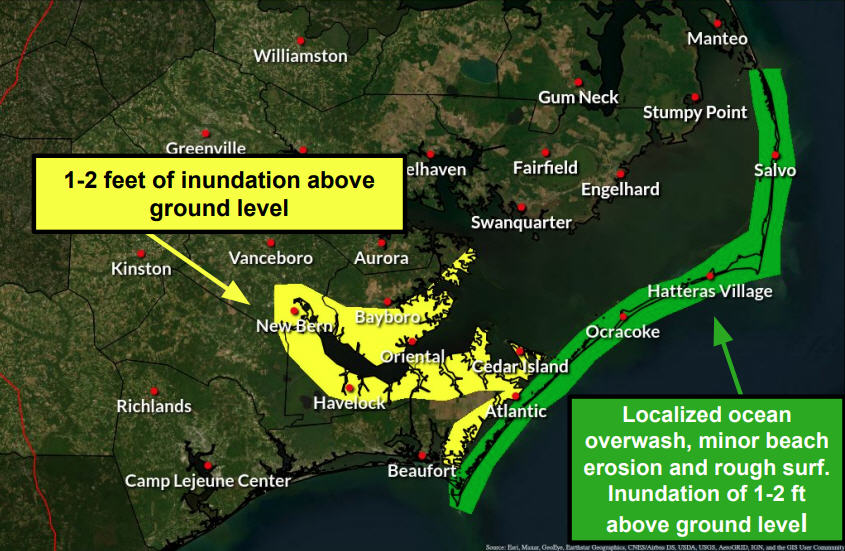Park Service releases annual reports for protected species on the seashore
By IRENE NOLAN
By IRENE NOLAN
The Cape Hatteras National Seashore 2009 annual reports for protected species and a report on the status of off-road vehicle management plan and negotiated rulemaking were released last week and are available to the public on the Park Planning (PEPC) Web site under the Interim Protected Species Management Strategy project.
The 2009 reports posted are:
Piping Plover annual report
Sea Turtle annual report
Seabeach Amaranth annual report
Colonial Waterbird summary
American Oystercatcher summary
Status of Off-Road Vehicle Management Plan & Negotiated Rulemaking with appendices
Off-Road Vehicle Law Enforcement Management Actions and Activities
Here are some of the highlights of the reports:
Piping plovers. Nine pairs produced six nests that hatched in 2009. The nests produced 22 chicks. Sixteen were lost and 6 fledged. Both the hatch rate and fledging rate were 67 percent. That’s up from 64 percent last year, and the same as 2007.
Sea turtles. There were 104 confirmed sea turtle nests on the seashore in 2009, down from a record high of 112 in 2008. There were 101 false crawls produced by turtles that came ashore, but for whatever reason did not nest.
Colonial waterbirds. Least tern nests doubled from the 2008 number – from 232 in 2008 to 577 in 2009. The fledging doubled from the 2007 number — from 85 to 174. The number of common tern and black skimmer nests increased from 2008 but no chicks were fledged.
American oystercatchers. There were 23 pairs of oystercatchers identified on the seashore in 2009, the same number as 2008. The birds produced 31 nests this year, compared to 32 in 2008. Fifteen nests hatched in 2009, compared to 13 in 2008. However, only 13 chicks fledged, four fewer than last year.
Seabeach amaranth. For the unintiated, seabeach amaranth is a plant that was federally listed as threatened in 1993. Apparently, it’s no longer found on the seashore. Here is what the 2009 report said, “Seabeach amaranth populations have fluctuated greatly since surveys began in 1985. In the last 10 years, numbers were the highest in 2002 with 93 plants. More recently numbers have declined with only one plant found in 2004 and two plants found in 2005. No plants have been found since 2006 and the plant is currently thought to possibly be extirpated from CAHA.”
Negotiated rulemaking update. Nothing new here.
Off-Road Vehicle Law Enforcement Management Actions and Activities. This is the first time this report has been part of the seashore’s annual reports. And the interesting thing about this report is that the Park Service took it off the Web site to “clarify” it after Outer Banks Sentinel editor Sandy Semans – and apparently others — raised questions about the reporting last Friday.
Semans wanted to know more about the violations in certain categories – for instance how many of the resource protection area violations were by ORVs and how many by pedestrians. The issue here is that the way the report and charts were presented implied that all violations were related to ORVs. Actually, many, if not most, of the resource protection area violations were by pedestrians. But Semans and others were told that the Park Service could not provide breakdowns.
Park officials issued this media release on Monday afternoon, Feb. 8.
Superintendent Mike Murray announced today a clarification of the law enforcement statistics contained in the 2009 Off-Road Vehicle Law Enforcement Management Actions and Activities report that was released on February 2, 2010.
Because of the Court’s and stakeholders’ interest in the effectiveness of law enforcement activities at the Seashore, National Park Service (NPS) law enforcement staff compiled a report that summarizes law enforcement activities for 2009. The charts and tables on pages 6-10 of the report provide the total numbers of violator contacts for all law enforcement activities throughout the Seashore, and not just for violations committed by off-road vehicle (ORV) users. The law enforcement staff does not keep separate statistics for violations by user group. For example, on page 6 of the report, there were a total of 98 “Entering Resource Closure” violator contacts in 2009; however, the number does not differentiate between the number of violations committed by ORV users or pedestrians.
This is the first year that the National Park Service (NPS) has provided an annual law enforcement summary to the Court, along with reports required by the Consent Decree.
“We appreciate the feedback we received that the scope of the law enforcement statistics may be unclear,” said Superintendent Murray. “We will add a clarification to the report posted on the NPS PEPC website.”
The report was removed from the Web site on Monday afternoon, presumably to clarify it, and was still not on the site late in the day.
When you read the reports, remember that the only bird federally listed is the piping plover – listed as threatened. The others – colonial waterbirds and oystercatcher – are listed only as species of special concern by the state of North Carolina.
Also remember when you compare numbers that the seashore was operating under the Interim Protected Species Management Plan in 2006 and 2007. The consent decree was effective May 1, 2008. The past year, 2009, was the first that the park was managed for a full year under the terms of the consent decree.
To see all of the reports, go to: http://parkplanning.nps.gov/document.cfm?parkID=358&projectId=13331&documentID=31872
Subject
Name
(required, will not be published)
(required, will not be published)
City :
State :
Your Comments:
May be posted on the Letters to the Editor page at the discretion of the editor.
May be posted on the Letters to the Editor page at the discretion of the editor.
May be posted on the Letters to the Editor page at the discretion of the editor.
May be posted on the Letters to the Editor page at the discretion of the editor.

























